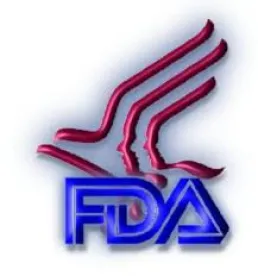Last week will undoubtedly be marked in the annals of Food and Drug Administration history as an important milestone for the Agency. On November 19, 2015, FDA approved the first genetically engineered (GE) animal intended for use as human food – AquaBounty Technologies’s AquAdvantage Salmon, a transgenic Atlantic salmon that contains a growth hormone gene from Chinook salmon that allows the fish to reach market size more quickly than traditional Atlantic salmon. The Agency’s press release about the decision and related actions is available here.
FDA GE Labeling Guidance
At the same time that it announced the approval decision on AquAdvantage Salmon, FDA finalized its 2001 guidance document called “Voluntary Labeling Indicating Whether Foods Have or Have Not Been Derived from Genetically Engineered Plants” and also issued a new companion guidance in draft form that is specific to the voluntary labeling of foods derived from GE salmon. The main takeaway message from these documents is that the Agency’s long-standing policy regarding labeling of foods containing genetically engineered ingredients has not changed, even after years of consumer and legislative pressure regarding the public’s right to know whether a food contains one or more GE ingredients. In sum, when the food itself does not exhibit a “material” difference when it contains GE ingredients vs. non-GE counterparts, under existing law, FDA cannot make such labeling mandatory – however, voluntary statements about the method used to produce the food are acceptable as long as the food’s label and labeling do not end up being false or misleading.
FDA’s guidelines for such voluntary labeling provide basic principles to ensure that label statements are not false or misleading, along with examples of accurate statements that could be made either for foods that are not derived from GE plants or for foods that are. For example, the Agency explains that the term “GMO free” may be misleading on most foods because most foods don’t contain any “organisms” and, moreover, the complete absence of any bioengineered ingredient may be difficult to substantiate. Expanding on that theme, the guidance documents also recommend ways to ensure that any voluntary labeling statements are substantiated.
AquAdvantage Salmon Approval
In addition, after reviewing information submitted in response to a specific request for comments on the labeling for GE salmon, the Agency did not find any data “showing that AquAdvantage Salmon is materially different from other Atlantic salmon in a manner that would require additional labeling.” Thus, the new draft guidance document on this topic discusses ways in which voluntary label statements for the salmon may be made without running afoul of the prohibition on false or misleading representations for a food product.
The AquAdvantage Salmon approval was based on many years of data collection and regulatory review, with FDA’s first involvement with the product coming in the mid-1990s. The inserted gene is regulated as a New Animal Drug because it is intended to “affect the structure or function” of the animal, so AquaBounty was required to demonstrate the safety and effectiveness of the drug, as well as the stability of the transgene in successive generations of the fish. Importantly, to mitigate any potential for environmental risks, the marketing approval includes the requirement for “multiple and redundant measures…to contain the fish and prevent their escape and establishment in the environment.”
Specifically, they will only be bred and raised in land-based, contained hatchery tanks in two specific facilities in Canada and Panama (not in the U.S.), and FDA as well as the regulatory authorities in Canada and Panama will be inspecting those facilities to ensure their continued compliance with the various containment measures. Deviation from those measures will render the animal drug unsafe and adulterated, such that FDA would have authority to take enforcement action against the manufacturer even before any larger problems occur. The majority of the salmon also will be reproductively sterile and all-female to provide another layer of risk mitigation in the unlikely event of an escape.
Fallout from AquAdvantage Decision
The Agency clearly anticipated the criticism it would receive from environmental and consumer advocacy groups in response to the GE salmon decision, and it has emphasized that the fish are safe to eat and that the Agency essentially had no basis to reject the sponsor’s application: “The fish are safe for humans and animals to eat, the rDNA construct is safe for the animal, and the claim about faster growth made by the sponsor has been confirmed. Because the sponsor has met these and other statutory requirements, the FDA must approve the application.”
And, apparently seeking to be as transparent as possible in order to alleviate public concerns about the GE salmon and the first-ever GE animal intended for human food, FDA has prepared and released on its website numerous documents related to the regulatory action. Those AquAdvantage Salmon documents include the New Animal Drug approval letter; releasable summaries of the data and other materials reviewed; the environmental assessment and FONSI required to be prepared under the National Environmental Policy Act (NEPA) for any significant agency action; and a list of FAQs as well as a “fact sheet” that are more accessible to laypersons. The same page also provides links to documents stemming from a 2010 meeting of the Veterinary Medicine Advisory Committee in which the safety and effectiveness of the GE salmon was examined in depth.
Nonetheless, even after more than 20 years of data collection by the sponsor and many layers of active review by the Agency, opposition to the GE salmon is already intensifying. Senator Lisa Murkowski has introduced a bill, S. 738 or the “Genetically Engineered Salmon Risk Reduction Act,” that would require labels of foods containing the fish to explicitly state that it contains GE salmon. And the Center for Food Safety immediately announced plans to sue the Agency along with other plaintiffs (such a challenge will likely be brought under the Administrative Procedure Act or NEPA, rather than the Federal Food, Drug, and Cosmetic Act, in light of the judicial deference afforded to agencies in interpreting and implementing their own rules). Not all consumer groups have decried the approval decision, however – for example, the Center for Science in the Public Interest issued a statement saying that it agreed with FDA’s assessment that the salmon is safe to eat, is nutritionally equivalent to its non-GE counterpart, and will not harm the environment (and that it “may even be beneficial [to the environment] if AquaBounty’s claims of efficiency are realized”).




 />i
/>i

